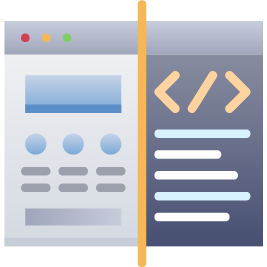How is medical device software classified?
It can feel overwhelming when you’re trying to classify software for your medical device - you have device classification, software safety classification, level of concern, and even software as a medical device (SaMD) classification. Don’t worry though, in today’s post we will break down the different types of classifications.
Medical Device classification
In the United States, the FDA categorizes medical devices into three classes based on their risk profiles and the controls necessary for safe and effective use: Class I (lowest risk), Class II, and Class III (highest risk).
You can read the FDA’s guidance on classifying your device for more information, but beware…getting this wrong will have serious consequences for your go to market strategy. We recommend consulting with a professional (click the link at the end of this article for a free consultation if you need some help).
You should keep in mind that even if your medical device is only software, it still has its own medical device classification.
Software safety classification
Software in a medical device is classified based on the potential risks of software failure according to the international standard IEC 62304. Software safety must be classified regardless of if it is part of a medical device or a software-only SaMD. According to the standard, you should assume that your software will fail and assess the risk.
If software failure doesn’t pose a risk of harming a patient, or that risk can be easily mitigated, your software is in the lowest classification, Class A.
If software failure poses a risk of harming the patient, but can’t be easily mitigated and could cause non-serious harm to a patient, it is Class B.
If software failure poses a risk of serious harm to a patient, it is Class C - the highest-risk class.
Since you need to understand the risks of your software failing, you have to think about and document your risks before you can perform your software safety classification. Depending on your risk level you’ll have to do more heavy lifting when it comes to design and documentation of your software.
Software level of concern
In general, software level of concern is correlated with the software safety classification. However, this is not always the case. Software level of concern is required by the FDA for premarket submissions for software in medical devices.
The framework used by the FDA for software level of concern is based on how software failure or design flaws could affect a patient. If the software failure or design flaws are unlikely to cause any injury, then the level of concern is minor, the lowest level. If software failure could result in minor injuries, then the level of concern is moderate. The highest level of concern is major, where serious injuries or death can occur.
Although the software level of concern is similar to the safety classification, it’s important to note that both analyses must be performed separately for all medical device software.
Software as a Medical Device (SaMD) Classification
Classification of SaMD is based on both the functionality of the software and the impact that a software failure could have on a patient.
First, you need to come up with a definition statement for your SaMD. The definition statement should cover how the information provided by the SaMD can impact healthcare decisions, such as if it is used to diagnose or recommend treatment. Additionally, the statement should include the severity of the healthcare situation in which the SaMD is intended to be used - is it for non-serious situations, or even critical situations. The definition statement should also include a description of the actual functionality of the SaMD.
Once your definition statement is completed, you can use it to help classify your SaMD. The SaMD categories start with Type I, which can inform or drive non-serious care, and go up to Type IV, which treats critical care situations and is the highest category.
We know it’s a lot to get through and there are a lot of categories - reach out to find out more and how we can help with your medical device software needs.





